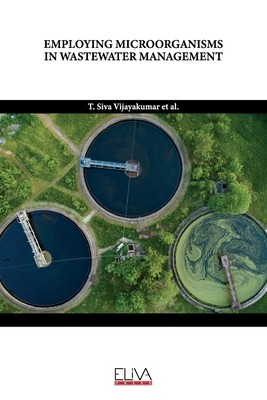
- We will send in 10–14 business days.
- Author: Reshma Devi Ramesh
- Publisher: Eliva Press
- ISBN-10: 9994985469
- ISBN-13: 9789994985463
- Format: 15.2 x 22.9 x 0.3 cm, softcover
- Language: English
- SAVE -10% with code: EXTRA
Employing Microorganisms in Wastewater Management (e-book) (used book) | bookbook.eu
Reviews
Description
Cholera, diarrhoea, dysentery, hepatitis A, typhoid, and polio are just among the infections that can spread due to contaminated water and poor sanitation. Almost 5.8 billion people are suffering from a lack of clean drinking water. People are exposed to health risks that can be avoided when water and sanitation services are absent, deficient or improperly managed. The drinking water of hundreds of millions of people is fatally contaminated or chemically polluted due to improper management of urban, industrial and agricultural wastewater. Arsenic and fluoride are examples of naturally occurring chemicals that may have health implications. Other compounds, like lead may be present in higher concentrations in drinking water as a result of leaching from water supply components that come into contact with the water. Water, sanitation and hygiene in healthcare facilities are just a few of the areas where WHO and UNICEF engage closely. Microbes are crucial to the treatment of wastewater. Protozoans, algae, and several types of bacteria can remove toxins and other dangerous substances from wastewater. Both science and technology had already progressed to the point that we can now employ microbes to identify contamination and toxicity, as well as to destroy germs that infect humans by using other microbes against them. We can safeguard our environment and ourselves by completely dissolving the pollutants in wastewater. We reviewed wastewater treatment in this chapter, including the function that microbes play in the process to manage wastewater.
EXTRA 10 % discount with code: EXTRA
The promotion ends in 20d.21:45:04
The discount code is valid when purchasing from 10 €. Discounts do not stack.
- Author: Reshma Devi Ramesh
- Publisher: Eliva Press
- ISBN-10: 9994985469
- ISBN-13: 9789994985463
- Format: 15.2 x 22.9 x 0.3 cm, softcover
- Language: English English
Cholera, diarrhoea, dysentery, hepatitis A, typhoid, and polio are just among the infections that can spread due to contaminated water and poor sanitation. Almost 5.8 billion people are suffering from a lack of clean drinking water. People are exposed to health risks that can be avoided when water and sanitation services are absent, deficient or improperly managed. The drinking water of hundreds of millions of people is fatally contaminated or chemically polluted due to improper management of urban, industrial and agricultural wastewater. Arsenic and fluoride are examples of naturally occurring chemicals that may have health implications. Other compounds, like lead may be present in higher concentrations in drinking water as a result of leaching from water supply components that come into contact with the water. Water, sanitation and hygiene in healthcare facilities are just a few of the areas where WHO and UNICEF engage closely. Microbes are crucial to the treatment of wastewater. Protozoans, algae, and several types of bacteria can remove toxins and other dangerous substances from wastewater. Both science and technology had already progressed to the point that we can now employ microbes to identify contamination and toxicity, as well as to destroy germs that infect humans by using other microbes against them. We can safeguard our environment and ourselves by completely dissolving the pollutants in wastewater. We reviewed wastewater treatment in this chapter, including the function that microbes play in the process to manage wastewater.


Reviews